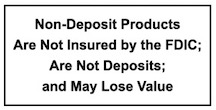Before I became a banker, way back in the 1900’s (ouch, that stings a lil bit) I had one checking account. I’d use it to pay my bills and buy my groceries, fill my car up with gas and if I had any extra, maybe even splurge on a new cassette once in awhile. I did my best to budget and save – all from the one account. Who’s with me? You’d subtract a couple hundred from your register and voilà, checking turned savings account, right? Except when that didn’t work out because you’d forgotten how much was stashed in the hypothetical savings account, subsequently make an error balancing your statement and voilà…overdrawn checking account!
Yeah, no fun…lame even.
Those were the days before account alerts and instant balance features. And also, before I realized that you could have more than one checking account. Ok, ok…some of you wise-crackers probably had this figured out circa 1985, but I was “like totally” a late bloomer. But listen, everyday is an opportunity to learn new things. And, today might just be yours, so hear me out.
It’s actually pretty handy to have several, let’s say 5 accounts. The great thing is that it’s super common for checking accounts to have zero fees nowadays. My favorite checking account offers all the perks for free, as long as I receive my bank statements online. I think that’s the preferred method of statement transportation nowadays, right? So, maintaining several accounts isn’t going to break the bank. (Did I do that?)
Now, let’s get organized. Here’s a list of accounts we should all have.
The Family Account or The Main Account
This is where it all starts. The account that your payroll is directly deposited into. The account that you pay your monthly bills out of, like rent, utilities and groceries. The hub account. The funds that aren’t earmarked for these finances will be transferred out to your other accounts, based on your budget. If you haven’t quite figured out your budget, do your best to determine a base point and adjust as you get more familiar with the process.
The Emergency Savings Account
It is savings, but technically this could also be a checking account. You should have the ability to name your accounts online, so feel free to call it whatever reminds you that these funds are for emergencies, like an unexpected illness or job loss for example. An appropriate goal for this account should be 3 to 6 months’ worth of income. Hopefully enough to get you and your family by should an unforeseen event occur. Choose a dollar amount that you can comfortably transfer from your Main Account each payday. And, most importantly, don’t touch these funds unless it’s an emergency.
The Personal Account
Everyone should maintain their own personal checking account for their own personal purchases. Because be honest, it’s a real bummer to ask your significant other for a few bucks to grab Starbucks on the way to work. Remember to make the budget planning a team effort, so everyone has an opportunity to bring up their individual expenses and financial responsibilities.
The Short-Term Goals Account
Use this account for smaller, planned expenses like new furniture, a weekend getaway or little home improvements. Save up and spend the funds once you reach your target.
The Long-Term Goals Account
This account is for things you’ll probably need 6 months’ worth of savings for, like a down payment on new house, a vehicle or a family vacation. The main thing is to not dip into this account.
And that’s it!, There you have it, 5 different accounts to keep you on track, on budget and out of the 80’s! Totally!

